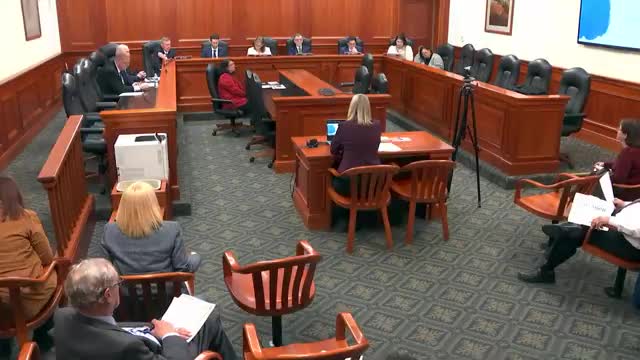Harmony Lloyd outlines Michigan transit services at public meeting
May 21, 2025 | 2025 House Legislature MI, Michigan
This article was created by AI summarizing key points discussed. AI makes mistakes, so for full details and context, please refer to the video of the full meeting. Please report any errors so we can fix them. Report an error »

Michigan's transportation landscape is set for a closer examination as the Appropriations Subcommittee on State and Local Transportation convened on May 21, 2025. A key focus of the meeting was the financial dynamics of public transit systems across the state, particularly the balance between fare pricing and operational costs.
During the discussions, officials highlighted the variability in fare structures among different transit agencies. The farebox revenue, which is the income generated from passenger fares, is determined locally, reflecting the unique economic conditions of each community. This means that the percentage of operational costs covered by fare revenue can differ significantly, especially between urban and rural areas. In urban settings, where population density is higher, the cost per passenger tends to be lower. Conversely, rural transit systems face higher costs due to the expansive areas they serve.
Harmony Lloyd, vice president of planning and innovation at SMART in Metro Detroit, emphasized the importance of understanding these financial nuances. She noted that public transportation exists in all 83 counties in Michigan, although coverage can vary widely. Some areas have comprehensive services, while others may only serve major cities, leaving outlying regions underserved.
The meeting underscored the need for local decision-making in fare setting, which directly impacts low-income residents who often rely on public transit for employment. The committee's discussions aim to ensure that transit systems remain accessible while balancing financial sustainability.
As the state continues to evaluate its transportation funding and policies, the insights from this meeting will play a crucial role in shaping future strategies to enhance public transit services across Michigan. The implications of these discussions are significant, as they will influence how communities can support their residents' mobility needs in the coming years.
During the discussions, officials highlighted the variability in fare structures among different transit agencies. The farebox revenue, which is the income generated from passenger fares, is determined locally, reflecting the unique economic conditions of each community. This means that the percentage of operational costs covered by fare revenue can differ significantly, especially between urban and rural areas. In urban settings, where population density is higher, the cost per passenger tends to be lower. Conversely, rural transit systems face higher costs due to the expansive areas they serve.
Harmony Lloyd, vice president of planning and innovation at SMART in Metro Detroit, emphasized the importance of understanding these financial nuances. She noted that public transportation exists in all 83 counties in Michigan, although coverage can vary widely. Some areas have comprehensive services, while others may only serve major cities, leaving outlying regions underserved.
The meeting underscored the need for local decision-making in fare setting, which directly impacts low-income residents who often rely on public transit for employment. The committee's discussions aim to ensure that transit systems remain accessible while balancing financial sustainability.
As the state continues to evaluate its transportation funding and policies, the insights from this meeting will play a crucial role in shaping future strategies to enhance public transit services across Michigan. The implications of these discussions are significant, as they will influence how communities can support their residents' mobility needs in the coming years.
View full meeting
This article is based on a recent meeting—watch the full video and explore the complete transcript for deeper insights into the discussion.
View full meeting
